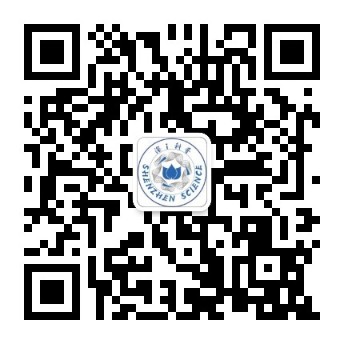音频科普:基因突变让早期人类获得了优势
音频科普:基因突变让早期人类获得了优势
A mutation in a key gene may have endowed humans with superior endurance—allowing them to compete better with other animals on the savanna. Christopher Intagliata reports.关键基因的突变可能赋予人类更强的耐力——这给了他们与草原上的其它动物竞争的优势。克里斯托弗·因塔格里塔报道。
撰文\播音:克里斯托弗·因塔利亚塔(Christopher Intagliata)
翻译:邱燕宁
审校:张清越
Homo sapiens are nowhere near the fastest runners in the animal kingdom. But what we lack in speed, we make up for in endurance. And we're specially equipped to go the distance. We've got bigger butt muscles than other primates. We lost most of our fur, too, and sprouted lots of sweat glands, to help us cool off.
在动物王国里,智人的跑步能力远不及最快的跑者。但我们在速度上的不足,是可以用耐力去弥补的。我们的身体配置尤其擅长远距离移动。我们的臀部肌肉比其他灵长类动物大。我们也失去了大部分的毛发,长出了许多汗腺,以帮助我们降温。
Scientists believe our endurance running abilities began to appear two [million] to three million years ago, around the time the genus homo came about. And a new study suggests that a mutation in one key gene had something to do with it.
科学家们相信我们的长跑能力在200万到300万年前,大约是在人属出现的时候就开始出现了。一项新的研究表明,一个关键基因的突变与此有关。
The mutation, in what's called the CMAH gene, altered the types of sugar molecules that decorate the surfaces of every cell in our bodies. Which in turn may have made our muscles less prone to fatigue.
这种被称为CMAH基因的突变改变了修饰我们身体每个细胞表面的糖分子的类型。结果可能是让我们的肌肉变得更耐疲劳了。
Researchers have now found that mice bred with that same mutation can run longer without tiring, compared to regular mice. The mice with the gene alteration also logged more miles running on their wheels, apparently for fun. And they had more capillaries in their back leg muscles—which would increase the delivery of nutrients and oxygen during endurance exercise.
研究人员现在发现,与普通老鼠相比,有相同基因变异的老鼠跑得更久而不累。这种修改过基因的老鼠在轮子上跑了更多的英里数,显然只是为了好玩。他们的后腿肌肉中还有更多的毛细血管,这将增加耐力运动中营养和氧气的输送。
The complete stats are in the Proceedings of the Royal Society B. [Jonathan Okerblom et al., Human-like Cmah inactivation in mice increases running endurance and decreases muscle fatigability: implications for human evolution]
完整的统计数据刊登在《Proceedings of the Royal Society B(英国皇家学会学报B)》上。
It's unclear if this small genetic tweak endows humans with the same benefits as the mice. But if it does, it could help explain how early humans got a leg up on their competitors. Or, really, two legs.
目前还不清楚这种小小的基因变异是否给人类带来了与老鼠同样的好处。但如果它能做到这一点,它或许有助于解释早期人类是如何在竞争中占得一步先机的。或者说,两条腿的先机。
关注【深圳科普】微信公众号,在对话框:
回复【最新活动】,了解近期科普活动
回复【科普行】,了解最新深圳科普行活动
回复【研学营】,了解最新科普研学营
回复【科普课堂】,了解最新科普课堂
回复【科普书籍】,了解最新科普书籍
回复【团体定制】,了解最新团体定制活动
回复【科普基地】,了解深圳科普基地详情
回复【观鸟知识】,学习观鸟相关科普知识
回复【博物学院】,了解更多博物学院活动详情
A mutation in a key gene may have endowed humans with superior endurance—allowing them to compete better with other animals on the savanna. Christopher Intagliata reports.关键基因的突变可能赋予人类更强的耐力——这给了他们与草原上的其它动物竞争的优势。克里斯托弗·因塔格里塔报道。
撰文\播音:克里斯托弗·因塔利亚塔(Christopher Intagliata)
翻译:邱燕宁
审校:张清越
Homo sapiens are nowhere near the fastest runners in the animal kingdom. But what we lack in speed, we make up for in endurance. And we're specially equipped to go the distance. We've got bigger butt muscles than other primates. We lost most of our fur, too, and sprouted lots of sweat glands, to help us cool off.
在动物王国里,智人的跑步能力远不及最快的跑者。但我们在速度上的不足,是可以用耐力去弥补的。我们的身体配置尤其擅长远距离移动。我们的臀部肌肉比其他灵长类动物大。我们也失去了大部分的毛发,长出了许多汗腺,以帮助我们降温。
Scientists believe our endurance running abilities began to appear two [million] to three million years ago, around the time the genus homo came about. And a new study suggests that a mutation in one key gene had something to do with it.
科学家们相信我们的长跑能力在200万到300万年前,大约是在人属出现的时候就开始出现了。一项新的研究表明,一个关键基因的突变与此有关。
The mutation, in what's called the CMAH gene, altered the types of sugar molecules that decorate the surfaces of every cell in our bodies. Which in turn may have made our muscles less prone to fatigue.
这种被称为CMAH基因的突变改变了修饰我们身体每个细胞表面的糖分子的类型。结果可能是让我们的肌肉变得更耐疲劳了。
Researchers have now found that mice bred with that same mutation can run longer without tiring, compared to regular mice. The mice with the gene alteration also logged more miles running on their wheels, apparently for fun. And they had more capillaries in their back leg muscles—which would increase the delivery of nutrients and oxygen during endurance exercise.
研究人员现在发现,与普通老鼠相比,有相同基因变异的老鼠跑得更久而不累。这种修改过基因的老鼠在轮子上跑了更多的英里数,显然只是为了好玩。他们的后腿肌肉中还有更多的毛细血管,这将增加耐力运动中营养和氧气的输送。
The complete stats are in the Proceedings of the Royal Society B. [Jonathan Okerblom et al., Human-like Cmah inactivation in mice increases running endurance and decreases muscle fatigability: implications for human evolution]
完整的统计数据刊登在《Proceedings of the Royal Society B(英国皇家学会学报B)》上。
It's unclear if this small genetic tweak endows humans with the same benefits as the mice. But if it does, it could help explain how early humans got a leg up on their competitors. Or, really, two legs.
目前还不清楚这种小小的基因变异是否给人类带来了与老鼠同样的好处。但如果它能做到这一点,它或许有助于解释早期人类是如何在竞争中占得一步先机的。或者说,两条腿的先机。
关注【深圳科普】微信公众号,在对话框:
回复【最新活动】,了解近期科普活动
回复【科普行】,了解最新深圳科普行活动
回复【研学营】,了解最新科普研学营
回复【科普课堂】,了解最新科普课堂
回复【科普书籍】,了解最新科普书籍
回复【团体定制】,了解最新团体定制活动
回复【科普基地】,了解深圳科普基地详情
回复【观鸟知识】,学习观鸟相关科普知识
回复【博物学院】,了解更多博物学院活动详情

做科普,我们是认真的!
扫描关注深i科普公众号
加入科普活动群

- 参加最新科普活动
- 认识科普小朋友
- 成为科学小记者
 会员登录
会员登录
















 深圳市宝安区国际会展中心20号馆
深圳市宝安区国际会展中心20号馆







